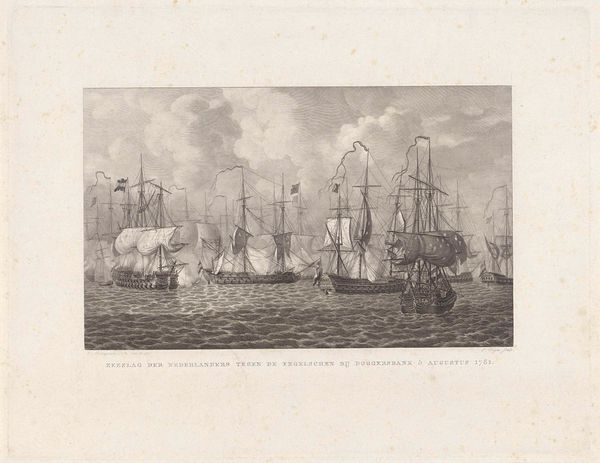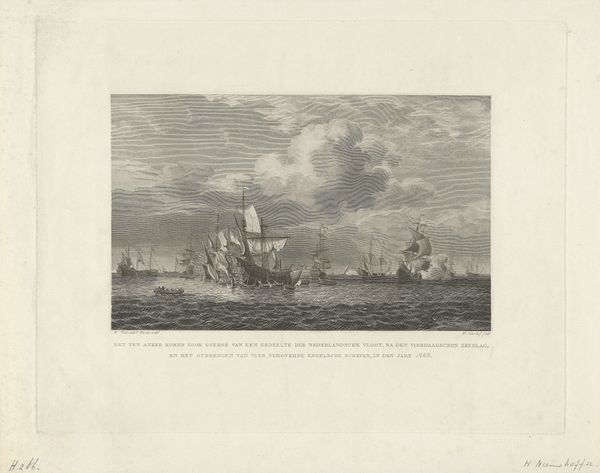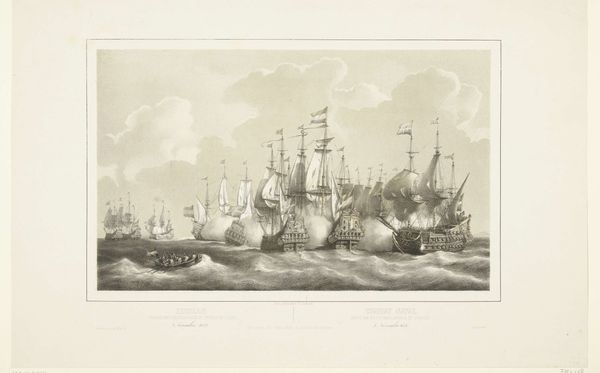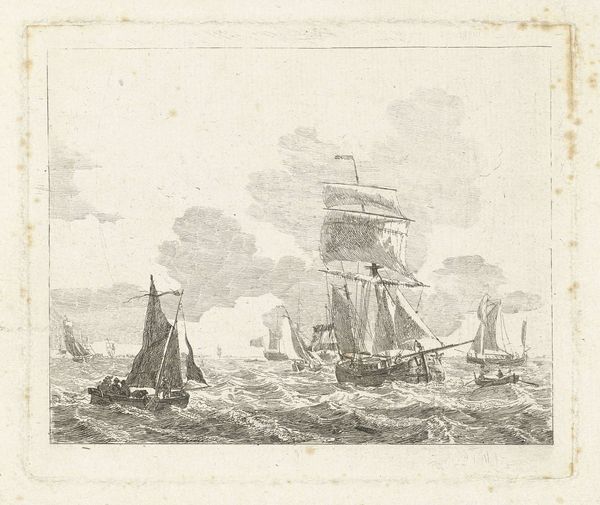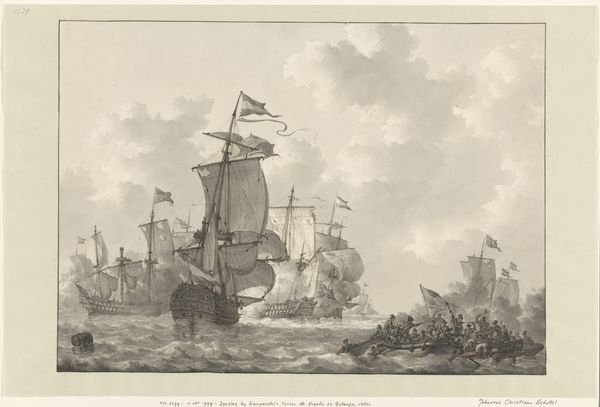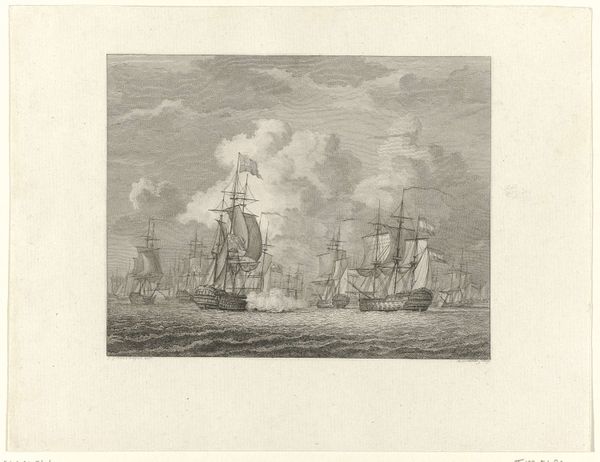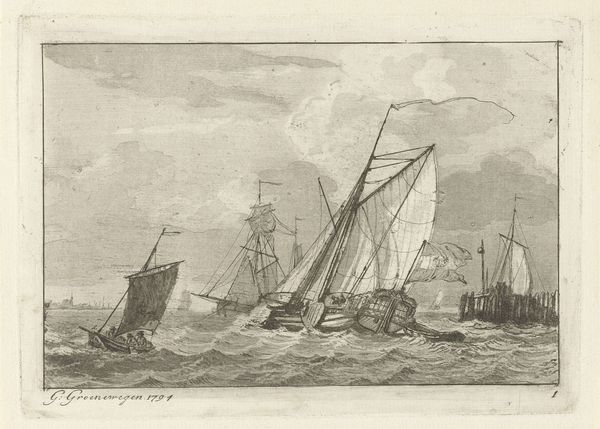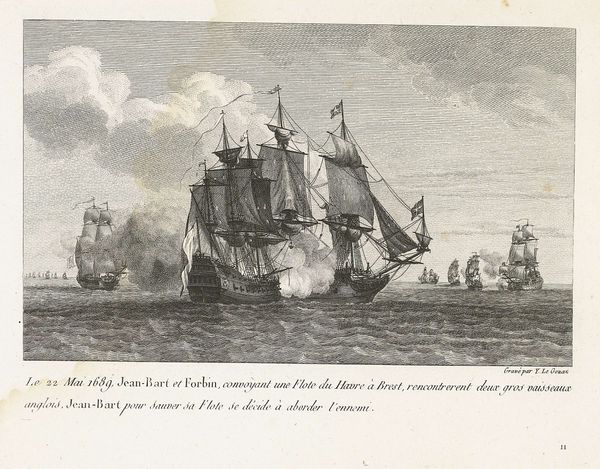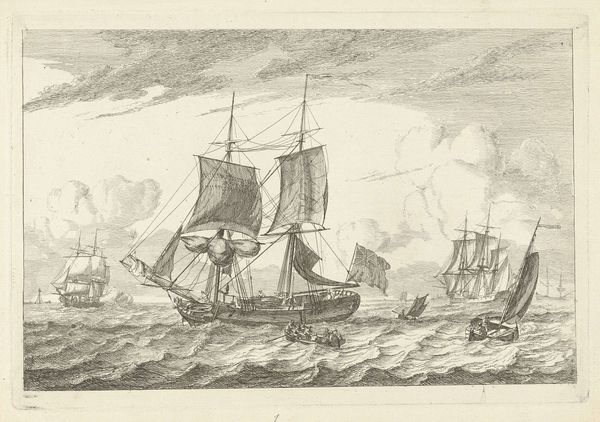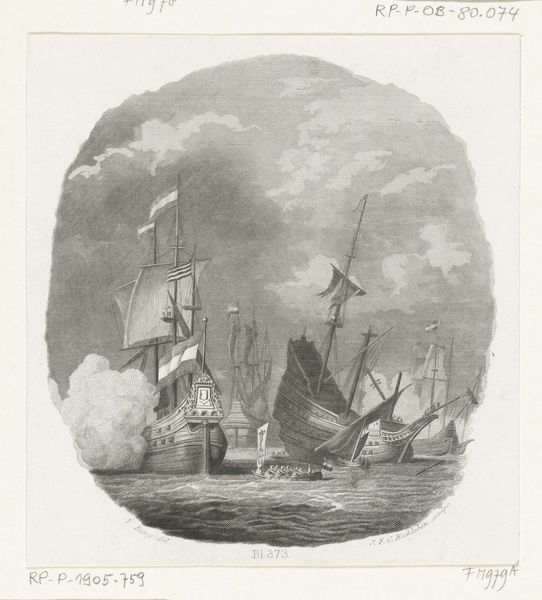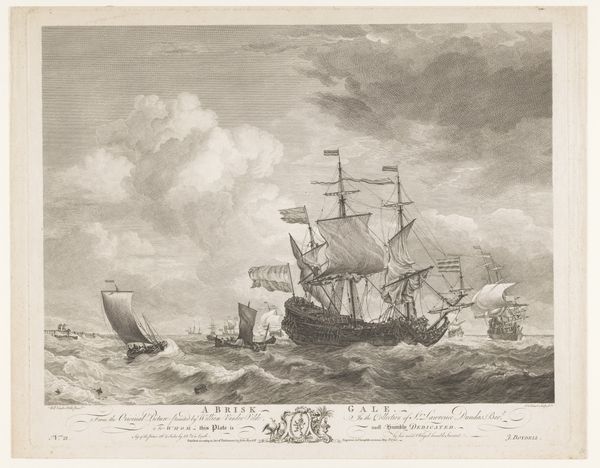
Dimensions: height 287 mm, width 371 mm
Copyright: Rijks Museum: Open Domain
Editor: This engraving, "Vierdaagse zeeslag, 1666" by Walraad Nieuwhoff, was created between 1829 and 1831 and it depicts a naval battle. I’m struck by how orderly it feels, despite being a scene of such intense conflict. What historical perspective can you share about its presentation? Curator: This print exemplifies how the Dutch Golden Age was reimagined in the 19th century. While made much later, this engraving visualizes the Four Days’ Battle. Note the almost theatrical way the ships are arranged. Why do you think it emphasizes order over chaos, even in representing a battle? Editor: Perhaps to assert Dutch naval power, even retroactively? Showing strategic mastery instead of messy warfare. Curator: Exactly. This print, made long after the actual event, reinforces national pride and legitimizes Dutch maritime dominance. Prints like these were not just historical records, they were tools in constructing national identity. Consider the Rijksmuseum's role: how does displaying this fit into their mission? Editor: The Rijksmuseum’s role must be to reinforce the significance of Dutch history and artistry in a public setting. But are these prints distributed more widely beyond the museum’s walls? Curator: Precisely! Prints allowed historical narratives to circulate among a wider public, shaping collective memory outside elite circles. Think about the influence on popular culture and understanding of Dutch history. What have you gathered from this analysis? Editor: It's fascinating how art serves as both a record and a shaper of historical narratives. Seeing it as a tool for solidifying national identity gives me a whole new perspective!
Comments
No comments
Be the first to comment and join the conversation on the ultimate creative platform.

